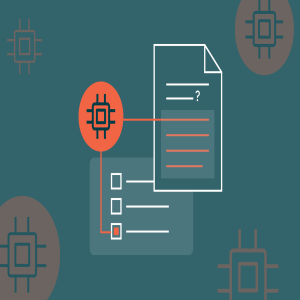Student remediation is the process of identifying and addressing areas where students are struggling. It lets educators support students with targeted interventions to improve their understanding and academic performance.
While the ‘addressing’ side of student remediation is fairly straightforward, the ‘identifying’ side of the equation is becoming harder.
With artificial intelligence and other tools becoming increasingly commonplace, students are more able to mask gaps in their learning and comprehension. A quick prompt in ChatGPT or similar can generate pass-grade content that gives the illusion of understanding.
At an individual level, this sort of assessment and exam misconduct makes it harder to see when students are experiencing challenges – or to support them to achieve a deeper understanding of a subject.
At an institutional level, it can seriously undermine your data integrity, leading to a distorted view of learning outcomes, and obscuring potential opportunities to improve teaching methods and curricula.
How does exam misconduct mask learning gaps?
In a world fixated on results, outcomes, and end products, it can be easy to overlook the importance of the journey. Exams and assessments aren’t just about attaining grades — they’re about assessing students' learning progress and understanding along the way.
Exams and coursework help educators identify students who are falling behind or struggling with certain topics – so they can make a timely intervention to help that student improve.
Exam misconduct makes it harder for educators to identify students who would benefit from remediation, which results in learning gaps and compromised learning experiences. As a result, students’ knowledge, understanding, and self-belief may suffer – even if their exam results are outstanding.
Of course, it isn’t just a question of which students are struggling. Assessment also provides a benchmark for educators to understand the efficacy of their teaching methods and assess the level of challenge in their curriculum.
Without a data-informed understanding of where students are struggling, educators may miss opportunities to refine and improve their approach, for the benefit of more than just individual students.
What are the consequences of being unable to identify learning gaps due to exam misconduct?
Unnoticed and uncorrected, exam misconduct has serious implications for student outcomes.
Students may achieve passing grades for their assessments but their knowledge will be lacking, reducing their readiness for further coursework and future professional pursuits. This can be especially detrimental in high-stakes careers – such as law and medicine – that rely on a deep understanding of academic topics.
Plus, exam misconduct can undermine students’ mental and emotional well-being. Although they may be perceived to have ‘gotten away with it’, academic misconduct can lead to guilt and low self-esteem. This, in turn, can make future misconduct more likely (Ives, 2020).
Even more insidious, students may remain unaware of how academic misconduct has diminished their learning and development. They may internalize their inflated grades and overestimate their abilities. Without acknowledging gaps in their knowledge and critical thinking skills, they may be surprised to struggle when faced with more challenging tasks, eroding their confidence and performance.
As much as it may hurt the ego, experiencing assessment setbacks is an essential part of the learning process. Engaging in exam misconduct to avoid embarrassment risks students missing targeted support that could help them truly excel in the very near future.
What strategies can educators implement to ensure effective student remediation?
To address the interlinked issues of exam misconduct and student remediation, educators need to form a supportive environment based on the fundamental values of academic integrity. Students need to know that they’re not defined by their grades but by their growth, commitment, and approach to learning, and this can be achieved by nurturing integrity to resolve misconduct resulting from academic pressure.
Creating this supportive environment involves communicating the importance of academic integrity through workshops, seminars, and discussions that highlight the long-term benefits of honest work. This effort can be reinforced with student honor codes and integrity pledges that students regularly review and commit to. Additionally, several strategies can further support student remediation:
Use a range of assessment methods
Cross-check student understanding in different contexts, such as written coursework, oral exams, and in-class discussions. In addition to traditional methods, incorporating project-based assessments, peer reviews, and group work can provide a more holistic view of a student's abilities. These methods also encourage collaboration and critical thinking, which are essential skills for academic and personal growth.
Use formative assessments throughout the year
Endeavor to test students in a lower-pressure environment and provide actionable feedback on their learning progress. Formative assessments can include quizzes, reflective journals, and interactive class activities that encourage continuous learning and improvement. The right assessment technology can make this process even more impactful, by providing instant feedback and personalized learning recommendations for students, helping them understand their strengths and areas for improvement.
Collaborate with colleagues
Compare notes on student performance to identify anomalies or patterns that might suggest misconduct. Establish regular meetings and professional learning communities (PLCs) to share insights and strategies. This collaborative, cross-curricular approach can help develop more consistent and fair assessment practices across different subjects and classes, ensuring a unified approach to identifying and addressing misconduct.
Encourage a growth mindset
Inspire students to view challenges as opportunities for growth, rather than as insurmountable obstacles. To help make mountains seem easier to climb, encourage students to set realistic, short-term goals that lead to their larger objectives. This makes the learning process more manageable and less overwhelming. Educators can also focus their feedback on recognising the effort and strategies students use to learn, rather than just the final outcome. You can also share your own learning experiences and demonstrate how you overcome challenges and setbacks.
Leverage AI-powered technology
Given the serious implications of using AI to generate exam answers and written assignments, many institutions are combining the approaches above with AI-powered technology that helps to deter exam misconduct. This technology includes features like behavioral analysis, identity verification, and anomaly analysis to identify possible misconduct.
A secure exam platform that uses AI-powered technology can also provide personalized learning analytics. These help educators tailor remediation strategies to individual student needs. Plus, technology can track student progress over time, identify learning patterns, and suggest interventions that are specific to each student’s challenges and strengths.
While tools that check for student misconduct may seem punitive, they actually support more positive student outcomes. Educators should approach identified misconduct with a restorative mindset, focusing on understanding why the misconduct occurred and working with the student to address underlying issues. This can involve counseling, academic support, and mentoring programs that help students build confidence and develop better study habits.
How can educators use technology to support student remediation?
Secure assessment platforms not only help in identifying misconduct but also provide a structured environment that can adapt to various assessment needs. These platforms can integrate with learning management systems (LMS) to offer a seamless experience for both students and educators. By using advanced algorithms and machine learning, they can also predict potential areas of concern before they become significant issues.
However, as yet, no technology is entirely foolproof, and should be used alongside qualitative techniques – and personal knowledge of students – to assess the likelihood of misconduct and respond appropriately.
To reduce the risk of exam misconduct
- Implement online proctoring tools – Online proctoring allows for real-time monitoring of students during exams using their device webcam and microphone, to detect suspicious behavior such as looking away from the screen, talking, or using unauthorized materials. Online proctoring tools can also incorporate advanced features such as facial recognition, browser lockdown, and AI-driven behavior analysis to enhance security. These tools can also provide detailed reports post-exam, which can help educators understand and address any suspicious activities.
- Administer exams offline – Use an exam platform that allows students to complete digital exams without access to the internet, to prevent access to AI platforms. Offline exam platforms should also be designed to automatically sync with central servers once the internet connection is restored. This ensures that all data is securely uploaded without risking integrity. Furthermore, these platforms can provide secure environments that log all actions taken by students during the exam, further safeguarding against misconduct.
To support the identification of learning gaps
- Assess progress in real-time – Implement tools for real-time analytics that let you monitor student progress, identify trends, and detect anomalies promptly. Real-time analytics can also offer predictive insights, highlighting potential areas of difficulty before they manifest as significant learning gaps. Dashboards can be customized to provide educators with actionable insights at a glance, helping them to intervene early and support students effectively.
- Collect meaningful data – Use an assessment platform that provides meaningful data to help you identify and address potential gaps in curriculum and assessment. Assessment platforms can also employ data visualization techniques to present information in a more comprehensible manner; this allows educators to quickly identify patterns and trends, facilitating more targeted and effective remediation strategies. Integrating formative assessment tools can also provide continuous feedback, fostering an environment of ongoing improvement.
To ensure data integrity
- Analyze data to detect anomalies – AI-powered analytics can detect any trends or anomalies that suggest misconduct, so you can take appropriate action. In addition to this, employing machine learning models that evolve based on new data can continuously improve the accuracy of anomaly detection. These systems can provide real-time alerts to educators, enabling prompt investigation and resolution of potential issues.
- Keep audit trails – Use a platform that maintains comprehensive audit trails of all assessment activities and data modifications, so you can always verify the integrity of assessment results. Audit trails should be easily accessible and presentable in a user-friendly format for compliance and verification purposes. These trails can include timestamps, user actions, and changes made to assessment data, providing a thorough record that can be critical during reviews or disputes.
- Prevent data from tampering – Use secure online platforms with built-in encryption, secure login, and data backup to protect assessment data from unauthorized access or tampering – and ensure all data is encrypted in transit and at rest to prevent unauthorized access. Multi-factor authentication (MFA) should also be considered for added security, ensuring that only authorized personnel can access sensitive data. Regular security audits and updates to the platform can also help maintain a robust defense against emerging threats. Educators should be trained on best practices for data security to complement technological measures.
Overview: Overcoming exam misconduct to strengthen student remediation
Addressing exam misconduct and supporting effective student remediation requires an approach that combines technology with traditional educational strategies. By fostering a culture of academic integrity, diversifying assessment methods, and implementing formative assessments throughout the year, educators can create an environment where students are encouraged to learn and grow authentically.
While AI-powered technology can play a supportive role in maintaining data integrity and identifying learning gaps, it should be used in conjunction with these foundational strategies to maximize its effectiveness. Institutions that adopt this balanced approach will be better positioned to ensure fair assessments, provide targeted remediation, and ultimately, support their students' academic and personal development.






